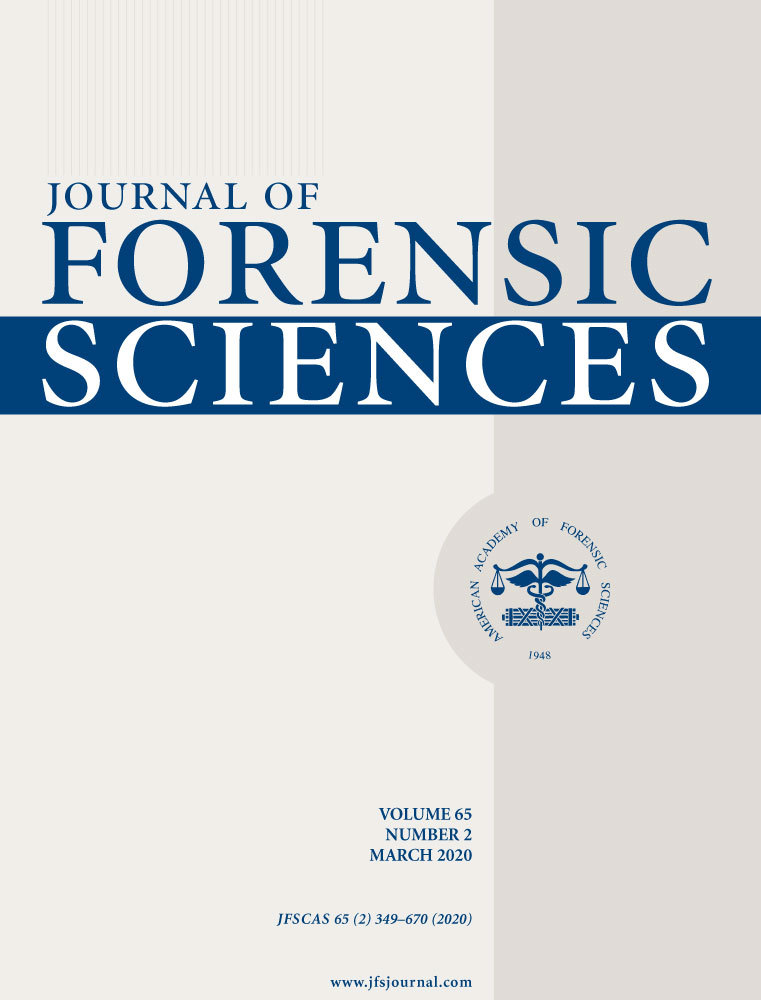Aqueous Fluid as a Viable Substitute for Vitreous Fluid in Postmortem Chemistry Analysis†
Presented at the 71st Annual Scientific Meeting of the American Academy of Forensic Sciences, February 18-23, 2019, in Baltimore, MD.
Abstract
Vitreous fluid sampling for postmortem chemistry analysis is discouraged in pediatric forensic cases involving head trauma due to the risk of introducing retinal artifacts. Aqueous fluid is physically separated from the posterior chamber of the eye, and therefore, unlikely to produce vitreal artifact when sampled. Analysis of aqueous fluid is therefore proposed as a substitute for vitreous. Vitreous and aqueous fluid was sampled concurrently from 28 pediatric and 55 adult decedents, and sodium (Na), potassium (K), chloride (Cl), urea nitrogen (UN), creatinine (Cr), and glucose (Glc) concentrations were compared. Significant correlation existed between all analytes regardless of age or postmortem interval, and linear regression equations were derived. Aqueous concentrations were generally higher than vitreous for Na, K, and Cr and were marginally lower for Cl, UN, and Glc. Assuming vitreous fluid as a standard for correlating postmortem chemistry to antemortem serum values, aqueous may be a viable substitute for vitreous when expected differences are considered.




